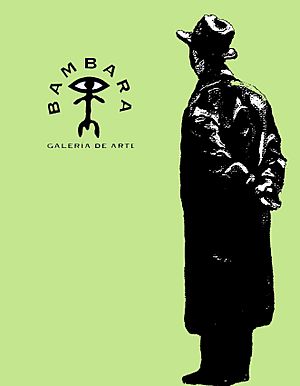Charris facts for kids
Ángel Mateo Charris, often called Charris, is a famous Spanish painter. He was born in 1962 in Cartagena, a city in the Murcia region of Spain. Charris is known for his unique style of art, which is part of a group of artists whose work is sometimes called "neometaphysical." This means their art often explores ideas and feelings in a thoughtful, sometimes dream-like way.
Contents
The Early Life of Charris
Charris was born on May 10, 1962. He studied art at the San Carlos Fine Arts College in Valencia, Spain, and finished his studies in 1985. During the 1980s, he showed his artwork in many group exhibitions with other artists.
In 1988, Charris traveled to New York for the first time. This trip was very important for him because he saw the paintings of Edward Hopper and artists from the Hudson River School. These artists greatly influenced his own painting style. In 1989, he won a national award for young photographers from the Spanish Youth Institute.
Charris's Artistic Style
Charris's art style is very interesting and draws inspiration from many different places. He is influenced by:
- Comics and Pop Art: He often uses bright colors and clear lines, similar to what you might see in comic books or pop art.
- Noir Cinema: This refers to old detective movies that often have a mysterious and dramatic feel. Charris sometimes brings this mood into his paintings.
- Classical Artists: He especially admires Edward Hopper, an American painter known for his realistic scenes of everyday life, often showing quiet or lonely moments.
Charris also includes many references to art history in his works. It's like he's having a conversation with famous artists from the past! He also loves travel literature, which means books about journeys and exploring new places. This love for travel often shows up in his art.
Where You Can See Charris's Art
Charris's paintings are so important that they are part of many major art collections. Some of these include:
- Fundación Argentaria
- Coca-Cola Foundation
- Bancaixa Collection
- Collection Testimoni La Caixa
- Museo Nacional Centro de Arte Reina Sofia
- The IVAM (Institut Valencià d'Art Modern)
- Artium of Vitoria
Major Art Shows
Charris has had many important solo art shows where only his work was displayed. One notable exhibition was:
- 'Who's afraid of the Turner Prize' at the T20 Gallery in Murcia in May 2010.
Images for kids
See also
 In Spanish: Ángel Mateo Charris para niños
In Spanish: Ángel Mateo Charris para niños



